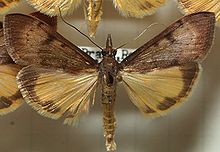.mw-parser-output .hidden-begin{box-sizing:border-box;width:100%;padding:5px;border:none;font-size:95%}.mw-parser-output .hidden-title{font-weight:bold;line-height:1.6;text-align:left}.mw-parser-output .hidden-content{text-align:left}@media all and (max-width:500px){.mw-parser-output .hidden-begin{width:auto!important;clear:none!important;float:none!important))You can help expand this article with text translated from the corresponding article in German. (February 2021) Click [show] for important translation instructions.
Machine translation, like DeepL or Google Translate, is a useful starting point for translations, but translators must revise errors as necessary and confirm that the translation is accurate, rather than simply copy-pasting machine-translated text into the English Wikipedia.
Consider adding a topic to this template: there are already 9,103 articles in the main category, and specifying|topic= will aid in categorization.
Do not translate text that appears unreliable or low-quality. If possible, verify the text with references provided in the foreign-language article.
You must provide copyright attribution in the edit summary accompanying your translation by providing an interlanguage link to the source of your translation. A model attribution edit summary is Content in this edit is translated from the existing German Wikipedia article at [[:de:Uresiphita gilvata]]; see its history for attribution.
You should also add the template ((Translated|de|Uresiphita gilvata)) to the talk page.
For more guidance, see Wikipedia:Translation.
| Uresiphita gilvata | |
|---|---|

| |

| |
| Scientific classification | |
| Domain: | Eukaryota |
| Kingdom: | Animalia |
| Phylum: | Arthropoda |
| Class: | Insecta |
| Order: | Lepidoptera |
| Family: | Crambidae |
| Genus: | Uresiphita |
| Species: | U. gilvata
|
| Binomial name | |
| Uresiphita gilvata (Fabricius, 1794)
| |
| Synonyms | |
| |
Uresiphita gilvata is a moth of the family Crambidae. It was first described by Johan Christian Fabricius in 1794 and is found in Europe and North Africa.
The wingspan is 29–37 mm. The forewing is greyish to light brown sometimes whitish bands either side of the median area (sometimes obsolete).The hindwing is pale or bright yellow with a black margin. The lines vary from faint to clear. The postmedian line is undulating and the antemedian line is almost straight.
Adults are on wing from September to October depending on the location.
The larvae feed on various low-growing herbaceous plants, including Genista, Cytisus and Ulex.
It is listed as a synonym of Uresiphita polygonalis by some sources.[1]